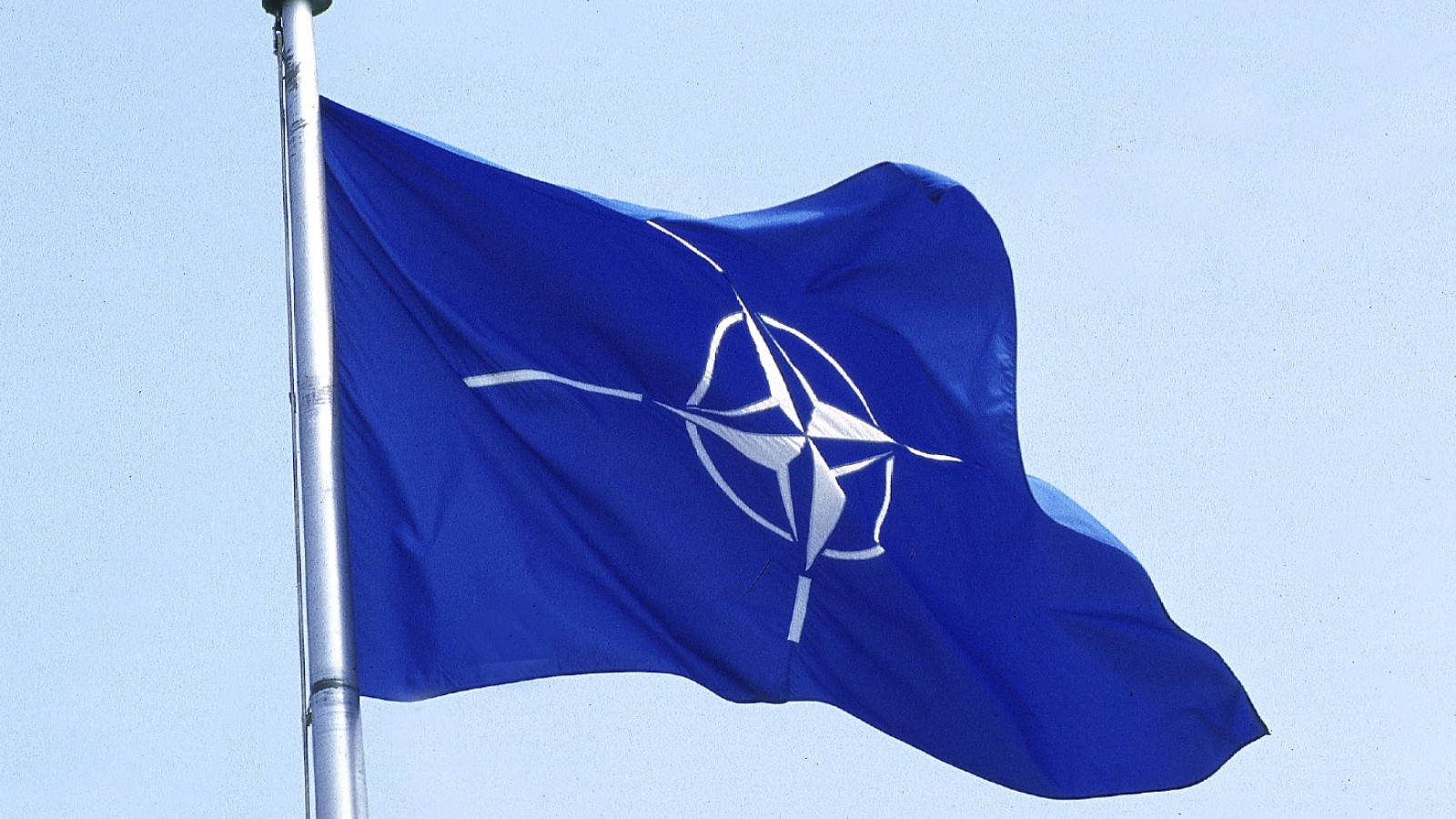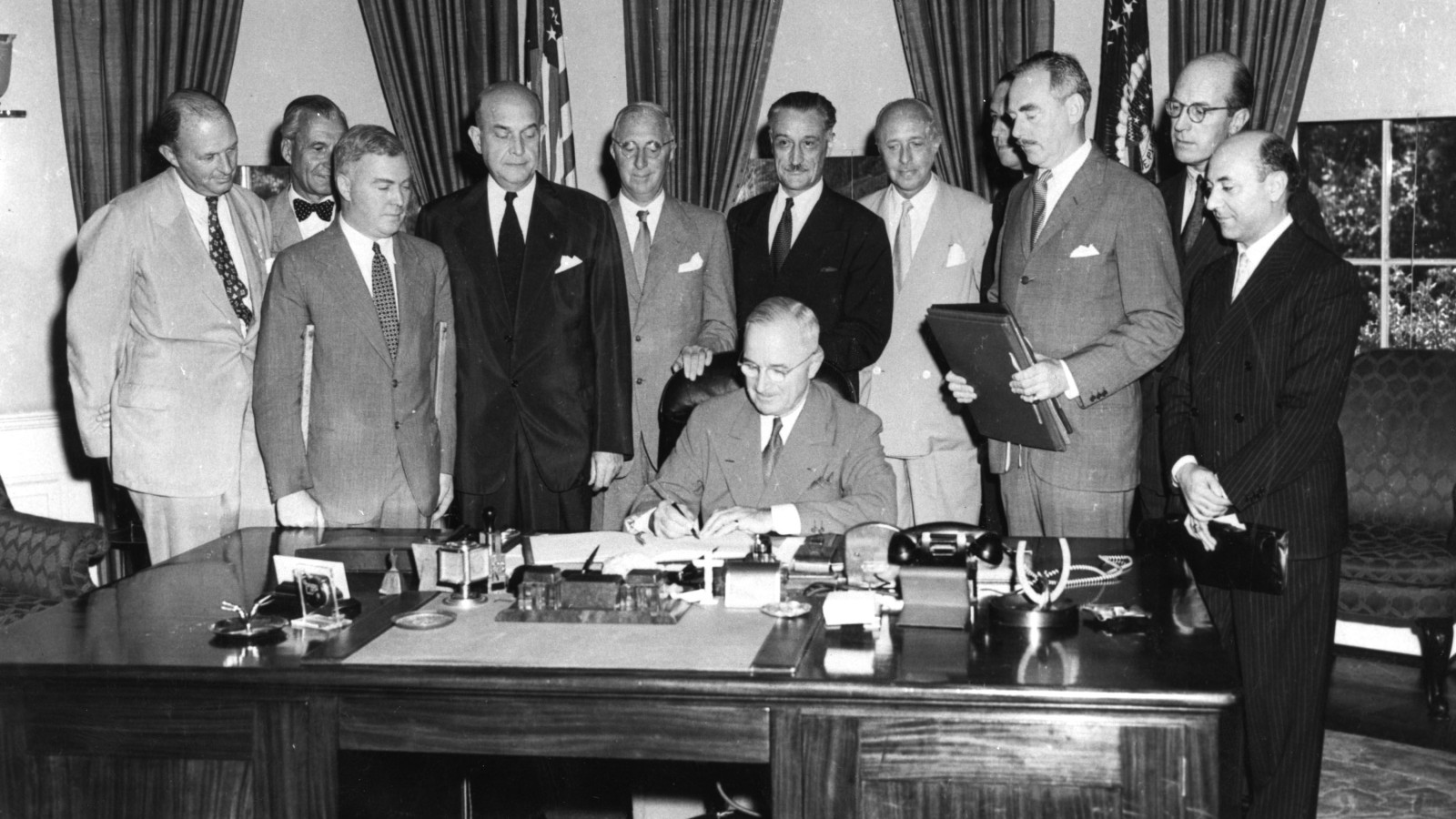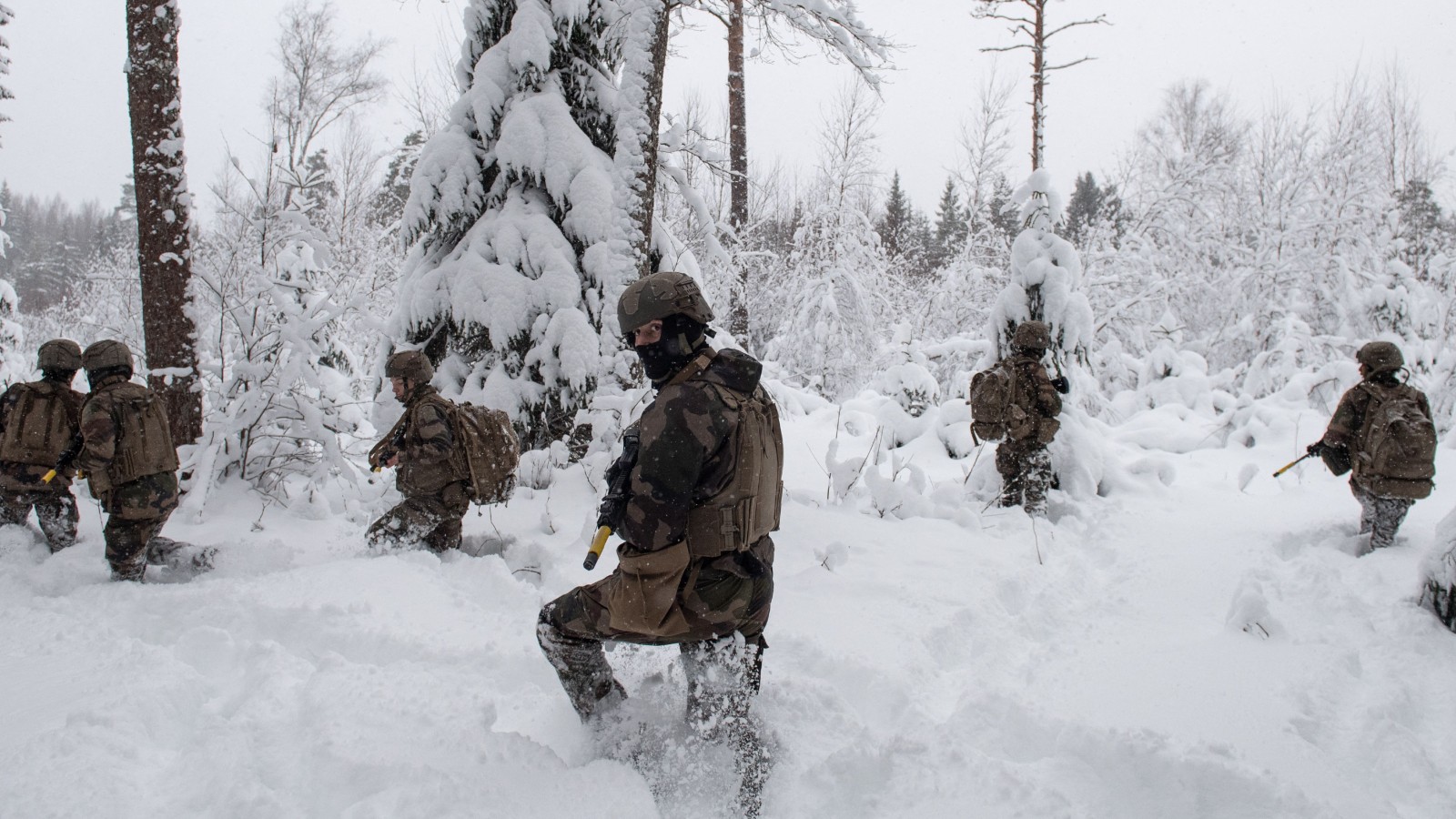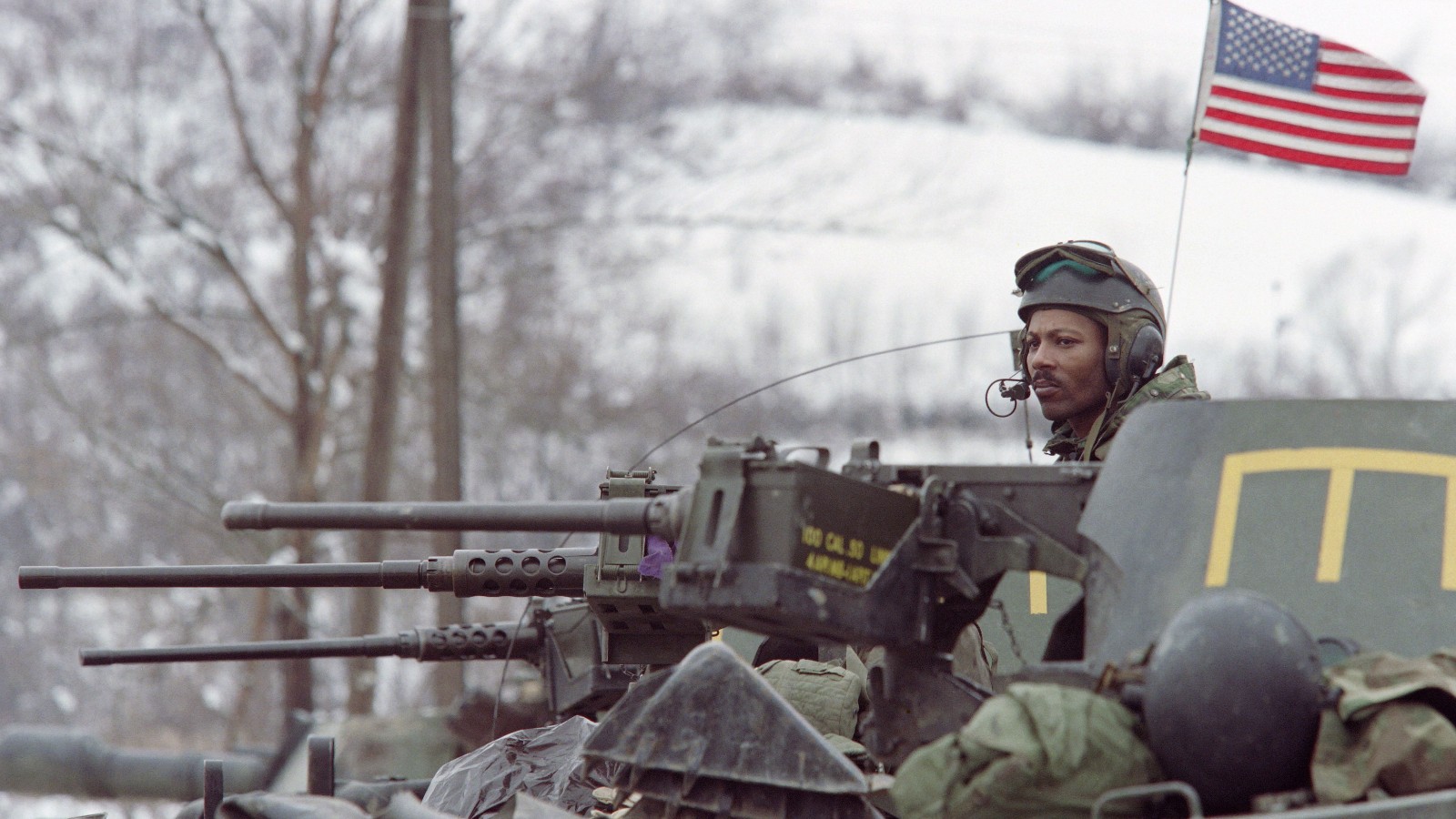NATO: Organization, mission and members
NATO is an alliance of 30 member states, each with a pledge to protect other members if attacked.

NATO stands for the North Atlantic Treaty Organization, which was formed in 1949 in the aftermath of World War II and at the outset of the Cold War.
After the defeat of Nazi Germany in 1945, Germany was occupied by the victorious Allied powers, inclduing the U.S., U.K., France and the Soviet Union. When the Soviet Union blocked Allied access to parts of Berlin in 1948, Germany was split into two separate nations: the Federal Republic of Germany and the German Democratic Republic. The U.S., Canada and ten European nations responded by signing the North Atlantic Treaty, in response to the perceived threat from the Soviet Union.
Article 5 of the treaty states that NATO members will respond collectively to an attack against any other member. "The Parties agree that an armed attack against one or more of them in Europe or North America shall be considered an attack against them all," it reads, according to the official NATO website. Participating countries are not obligated to respond with military force, but can choose to support other members with political, economic or other forms of aid.

NATO's mission
"NATO's essential purpose is to safeguard the freedom and security of its members through political and military means," the Brussels-based group's website states.
But the group's embrace of military action is unambiguous: "If diplomatic efforts fail, it has the military capacity needed to undertake crisis-management operations."
NATO has also expressed a commitment to "democratic values" and the sharing of resources that will enhance the defense and security of member nations by preventing conflict, according to the U.S. Mission to NATO.
NATO members
There are currently 30 member states in NATO. The 12 original members from 1949 are Belgium, Canada, Denmark, France, Iceland, Italy, Luxembourg, the Netherlands, Norway, Portugal, the United Kingdom and the United States.
According to the organization's website, any European state is able to join the group, providing it further the "principles of this Treaty and to contribute to the security of the North Atlantic area.”
In 2004, one year after NATO took command of the coalition of nations fighting in Afghanistan, another set of countries joined: Bulgaria, Estonia, Latvia, Lithuania, Romania, Slovakia and Slovenia. In 2009, Albania and Croatia gained membership.

Besides its member nations, NATO has strategic partnerships with other countries through its "Membership Action Plan," which offers assistance and advice to nations seeking membership in NATO. Four countries are currently trying to join NATO through those plans: Georgia, Bosnia/Herzegovina, Montenegro and the Macedonian Republic.
The 30 member states are (with the year they joined).
- Belgium (1949)
- Canada (1949)
- Denmark (1949)
- France (1949)
- Iceland (1949)
- Italy (1949)
- Luxembourg (1949)
- Netherlands (1949)
- Norway (1949)
- Portugal (1949)
- The United Kingdom (1949)
- The United States (1949)
- Greece (1952)
- Turkey (1952)
- Germany (1955)
- Spain (1982)
- Czech Republic (1999)
- Hungary (1999)
- Poland (1999)
- Bulgaria (2004)
- Estonia (2004)
- Latvia (2004)
- Lithuania (2004)
- Romania (2004)
- Slovakia (2004)
- Slovenia (2004)
- Albania (2009)
- Croatia (2009)
- Montenegro (2017)
- North Macedonia (2020)
In 2006 it was agreed that each member state commit 2 per cent of their GDP to defense spending, in order to uphold their treaty obligations towards one another in the event one is attacked. However, very few member states have met this spending level, while the U.S. spends as much as 3.6 per cent on defence, according to Time Magazine.
NATO organization
The member nations of NATO are represented by a delegation, each with one presiding "permanent representative" who is generally a seasoned diplomat or military officer. These representatives form the North Atlantic Council, the primary administrative body within NATO.
The chair of the North Atlantic Council and the overall director of NATO is the Secretary General, who is appointed by consensus of NATO members. The Secretary General usually serves a term of four years, though that term may be extended.
The leader of NATO's military operations is the Supreme Allied Commander Europe, who has typically been an American military leader (the Secretary General has typically been a European).
The current NATO Secretary General is Jens Stoltenberg, the former prime minister of Norway and UN Special Envoy, according to the official NATO website.
NATO action
In the years following the 1991 breakup of the Soviet Union, NATO's mission has shifted somewhat in response.
In the Balkan conflicts that occurred in the former Yugoslavia during the 1990s, NATO troops performed their first wartime actions, which included shooting down Bosnian aircraft, bombing campaigns and other airstrikes. NATO forces still maintain a presence of around 3,500 troops in Kosovo.
There was also a NATO response to the Iraqi invasion of neighboring Kuwait in 1991, which triggered the first Gulf War. However this mission, named Operation Anchor Guard, was largely to observe and help support any offensive against member state Turkey.

Following the Sept. 11 terrorist attacks in the United States, NATO troops were called into action to fulfill the group's charter. In 2003, NATO assumed control of military operations in the anti-terrorist occupation of Afghanistan, leading the International Security Assistance Force (ISAF) until Jan 1, 2015.
NATO forces have also been active in anti-piracy efforts off the east coast of Africa, and in the 2011 civil war in Libya.
After the annexation of the Ukrainian region of Crimea by Russia, NATO played a role in managing the diplomatic crisis. Alhough neither Russia nor Ukraine are members of NATO, Russia's president Vladimir Putin did express an interest in joining the alliance, the Guardian reported. The prospect of Ukraine joining the alliance is strongly opposed by Russia, has been cited as a major cause of the crisis in February 2022, which threatened to begin a war between the two nations, according to the New York Times.
Additional reading
The U.S. Office of the Historian has a thorough history of NATO, while the non-profit institution Brookings has a in-depth article on NATO's role in the Bosnian conflict, written by Ivo H. Daalder, a former U.S. Ambassador to NATO.
Bibliography
- "NATO Won’t Let Ukraine Join Soon. Here’s Why," New York Times
- "Ex-Nato head says Putin wanted to join alliance early on in his rule," The Guardian
- "The Only 5 Countries That Meet NATO's Defense Spending Requirements," Time Magazine
- U.S. Mission to NATO
- NATO.int
Sign up for the Live Science daily newsletter now
Get the world’s most fascinating discoveries delivered straight to your inbox.

- Timothy WilliamsonEditor-in-Chief, All About History










